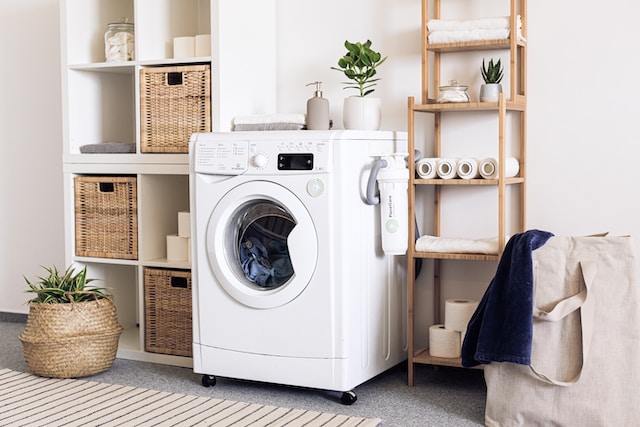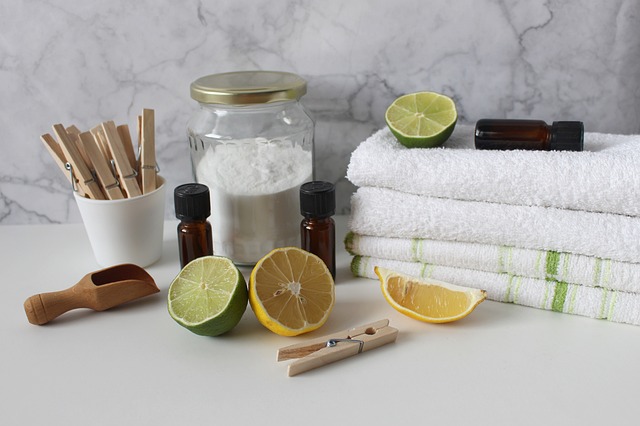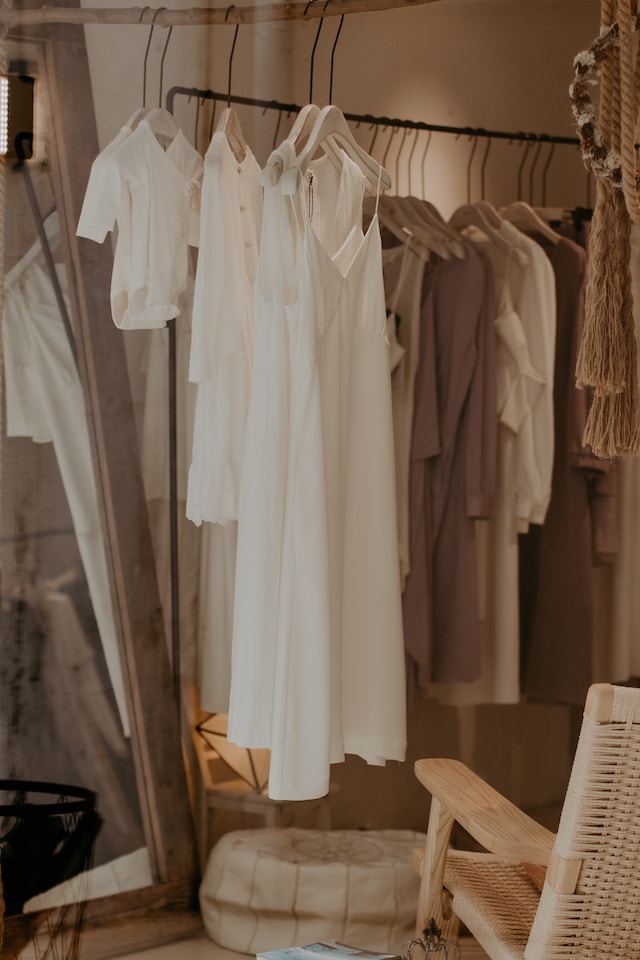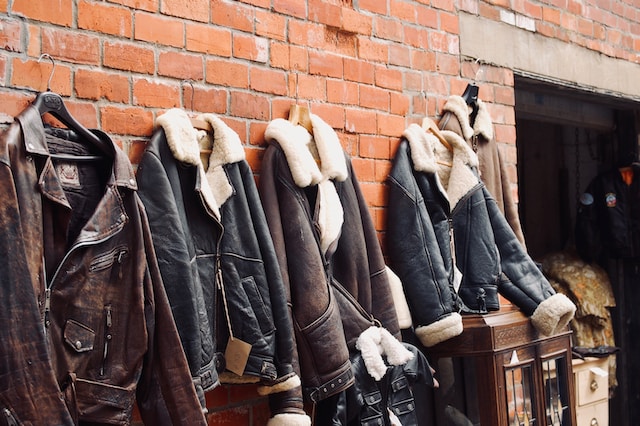
Vintage clothing is always in style, and can add a unique and vintage flair to anyone’s wardrobe. However, they come with their own special cleaning and care instructions to keep them in great condition. Here are some tips for cleaning and caring for vintage clothing, so you can enjoy them for years to come.
Cleaning and Care of Vintage Clothing
it’s not enough that you know how to shop for proper vintage pieces. You’ll need to know how to properly care for them too. When it comes to cleaning vintage clothing, it is important to approach the process with care. Vintage clothing is often made from delicate fabrics that require special attention to maintain their quality. Here are some general guidelines to follow when cleaning vintage garments:
Assessing fabric and care labels
Before you begin cleaning, it is essential to assess the fabric and look for care labels. Different fabrics require different cleaning methods, and some may even be dry clean only. If there are care labels available, follow the instructions carefully. If there are no labels, research the fabric type and recommended cleaning methods for that particular material.
Different cleaning methods for various fabric types
There are different cleaning methods to use depending on the fabric type. Here are some common cleaning methods for different fabrics:
Handwashing delicate fabrics
For delicate fabrics, it is best to hand wash with cold water and gentle soap. Avoid heat, as it can cause damage to the fabric. Gently squeeze excess water out of the garment and avoid wringing or twisting the fabric, as this can cause stretching or tearing.

Dry cleaning vintage pieces
Dry cleaning may be necessary for more delicate vintage clothing. Be sure to choose a dry cleaner that specializes in vintage clothing. Inform the dry cleaner of any stains or damage that may require special attention.
Machine washing certain items
Not all vintage clothing necessarily requires delicate care. Some pieces, such as denim or cotton, can handle machine washing. However, use cold water and a gentle cycle, and avoid overloading the machine to prevent stretching or tearing.
Treating stains and spot cleaning
Stains on vintage clothing should be addressed immediately to avoid setting into the fabric. Use a spot-cleaning solution specific to the stain type and fabric to ensure proper cleaning and care. Test the solution on a small, inconspicuous area first to ensure it does not damage the fabric. Gently blot the solution onto the stain with a clean cloth, and avoid rubbing, which can cause the stain to spread.
Drying vintage clothing safely
After washing, it is important to dry vintage clothing properly to avoid damage. Avoid using a dryer, as the heat can cause shrinkage or damage to the fabric. Instead, lay the garment flat on a clean towel and reshape it to its original form. Allow it to air dry naturally in a cool, dry place, avoiding direct sunlight or heat sources.
Ironing and steaming vintage garments
If ironing or steaming is necessary, it is best to use a low-heat setting and avoid ironing directly onto any embroidered or printed areas. For delicate fabrics, consider using a pressing cloth to avoid direct contact with the iron or steam.
Storage and Organization

Aside from proper cleaning and care, proper storage of vintage clothing is key to keeping them in good condition. Here are some tips on how to store and organize your vintage collections:
1. Proper storage containers and materials: Use acid-free tissue paper or muslin wrap to store vintage clothing. Do not use plastic storage or vacuum-sealed bags as they can trap moisture and lead to mildew or mold growth. Instead, use breathable garment bags or boxes made from archival materials.
2. Preparing vintage clothing for storage: Clean the garment thoroughly before storing to prevent stains and odors from setting in. Allow it to air dry completely before storing to avoid moisture buildup. Stuff the sleeves and bodice with acid-free tissue paper to maintain the garment’s shape.
3. Techniques for folding and hanging vintage garments: For garments that can be folded, such as knitwear or cotton, fold them neatly and store them in a drawer or on a shelf, ideally stacked with heavier items at the bottom to avoid crushing. For garments that need to be hung, use padded hangers to avoid stretching or distorting the fabric.
4. Protecting clothing from light, dust, and pests: Store clothing in a cool, dry, and dark place, away from direct sunlight and artificial light sources to prevent fading. Use lavender sachets or cedar blocks to deter moths and other pests. Periodically check the clothing for signs of infestation and treat the garments immediately.
5. Best practices for organizing vintage collections: Sort your vintage collections by type or era, and label the storage containers accordingly. Make an inventory of your vintage clothing to keep track of what you have and where they are stored. Store your vintage collections separately from your everyday clothing to avoid accidental damage or staining.
By following these tips, you can ensure that your vintage clothing remains in excellent condition for years to come. Proper storage and organization can not only preserve the quality of your vintage collections but also make them easier to access and enjoy.
Preservation Tips for Specific Items
Vintage dresses and skirts
For vintage dresses and skirts, proper storage is key to maintaining their shape and condition. Hang them on padded hangers to avoid stretching or distortion, and cover them with a breathable garment bag to protect them from dust. Use muslin or acid-free tissue paper to stuff the sleeves and bodice to maintain their shape, and avoid storing them in direct sunlight or damp areas. If the dress or skirt has a lot of beading or embroidery, it may be best to dry clean it to avoid damaging the details.
Vintage suits and jackets
Vintage suits and jackets should be stored on padded hangers in a cool, dry, and dark place. Use muslin or acid-free tissue paper to stuff the sleeves and shoulders to maintain their shape,

Avoid storing them in plastic bags or containers, as they can trap moisture and cause mustiness or mildew. If the suit or jacket has any stains or damage, take it to a professional cleaner or tailor for advice.
Vintage accessories
Vintage accessories are often made from delicate materials that require special care. For hats, use hat boxes or padded bags to store them, and stuff them with acid-free tissue paper to retain their shape. For shoes, use shoe trees or stuff them with tissue paper to maintain their shape and avoid creasing. Gloves should be stored flat in a cool, dry place and away from direct sunlight or heat sources. Always handle accessories with clean hands and avoid touching any fragile parts or fabrics unnecessarily.
Vintage textiles
Textile preservation requires extra care and attention to ensure their longevity. For quilts, fold them carefully and store them in acid-free boxes or bags to prevent fading, mildew, or insect damage. For linens and lace, store them flat or rolled and use acid-free tissue paper to separate layers to prevent any dye transfer or snags. Avoid exposing them to light, heat, or moisture, as these can cause yellowing or discoloration. Periodically check the textiles for signs of damage or infestation and attend to them immediately.
Lastly, avoid using any adhesives or tapes, as they can leave a residue or even damage the clothing. If the clothing needs repairs, take it to a professional tailor, as sewing techniques and fabrics have changed significantly over time, and a tailor with vintage clothing experience should know the proper repair methods.
Vintage clothing adds character and charm to one’s wardrobe, but it requires extra care to keep them looking their best. With the right care and maintenance methods, vintage clothing can be enjoyed for years to come.
